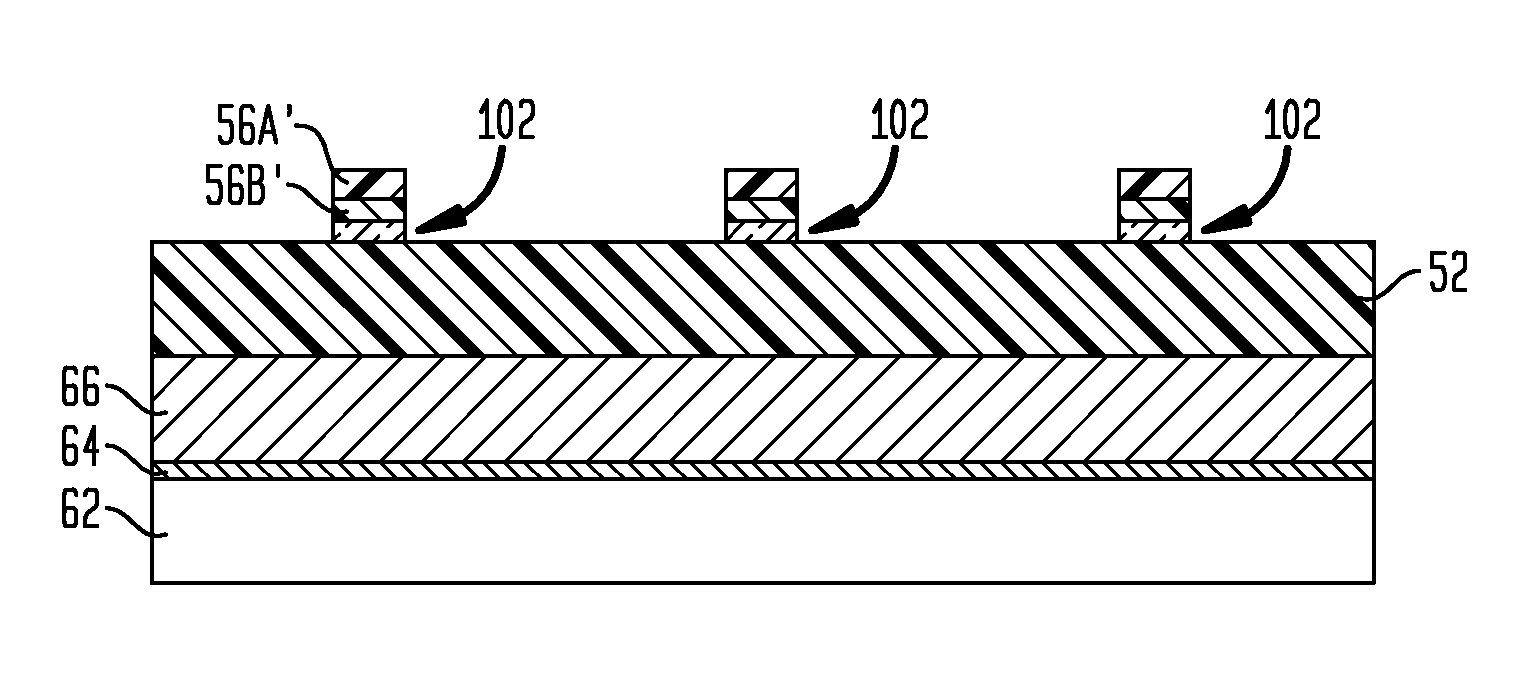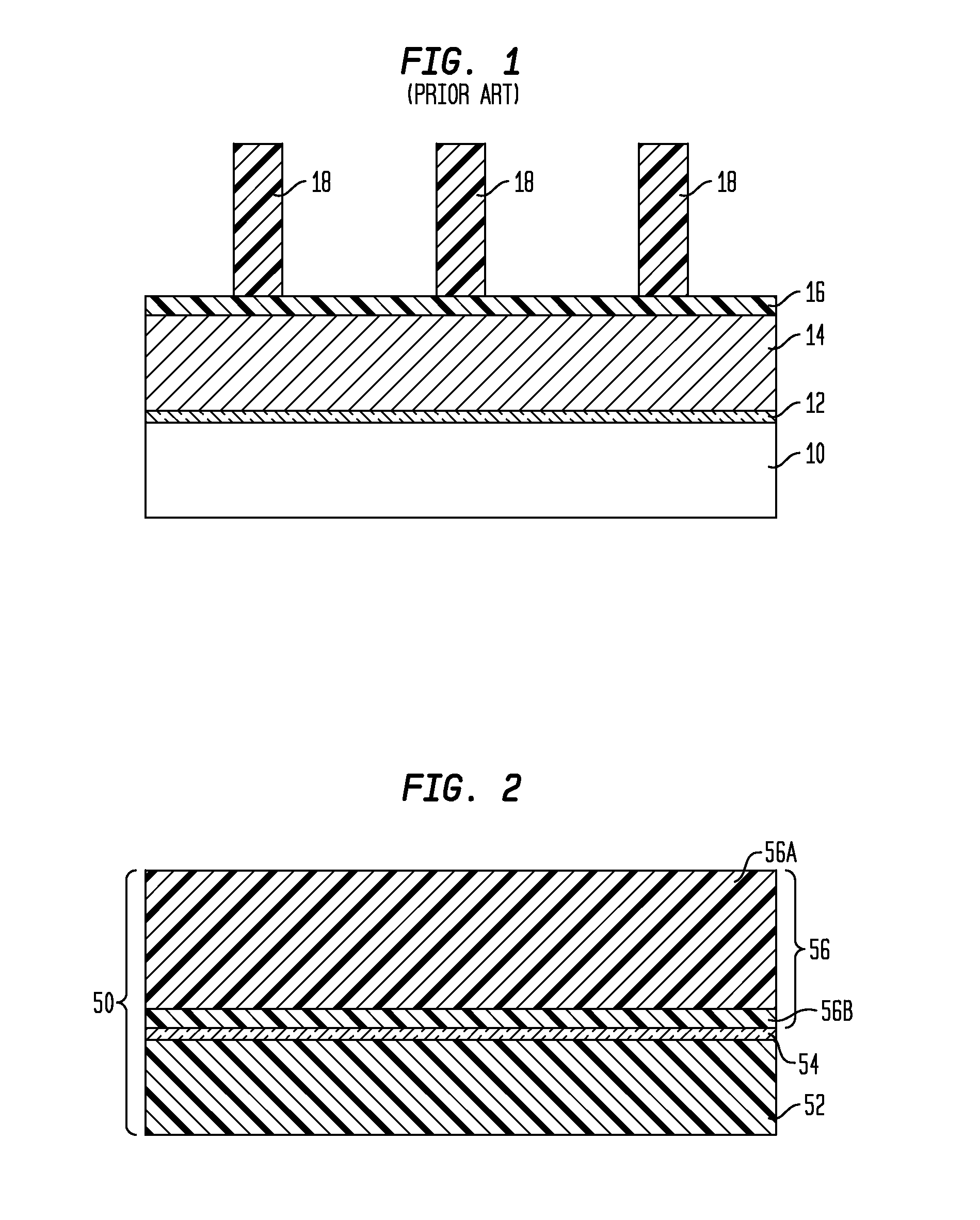Trilayer resist scheme for gate etching applications
a gate etching and resist scheme technology, applied in the field of integrated circuits, can solve the problems of significant resist loss and minimal resist budget for transferring a pattern through a 100 nm polysi gate conductor, and achieve the effect of minimizing the extend of ler and lwr, and avoiding flopping or buckling
- Summary
- Abstract
- Description
- Claims
- Application Information
AI Technical Summary
Benefits of technology
Problems solved by technology
Method used
Image
Examples
Embodiment Construction
[0032]The present invention, which provides a trilayer resist (TLR) scheme for gate etching applications and CMOS structures formed by utilizing the same, will now be described in greater detail by referring to the following discussion and drawings that accompany the present application. It is noted that the drawings including the cross sectional views are provided for illustrative purposes and, as such, the same are not drawn to scale.
[0033]In the following description, numerous specific details are set forth, such as particular structures, components, materials, dimensions, processing steps and techniques, in order to provide a thorough understanding of the present invention. However, it will be appreciated by one of ordinary skill in the art that the invention may be practiced without these specific details. In other instances, well-known structures or processing steps have not been described in detail in order to avoid obscuring the invention.
[0034]It will be understood that whe...
PUM
 Login to View More
Login to View More Abstract
Description
Claims
Application Information
 Login to View More
Login to View More - R&D
- Intellectual Property
- Life Sciences
- Materials
- Tech Scout
- Unparalleled Data Quality
- Higher Quality Content
- 60% Fewer Hallucinations
Browse by: Latest US Patents, China's latest patents, Technical Efficacy Thesaurus, Application Domain, Technology Topic, Popular Technical Reports.
© 2025 PatSnap. All rights reserved.Legal|Privacy policy|Modern Slavery Act Transparency Statement|Sitemap|About US| Contact US: help@patsnap.com



